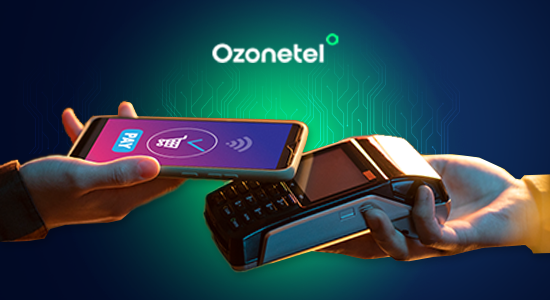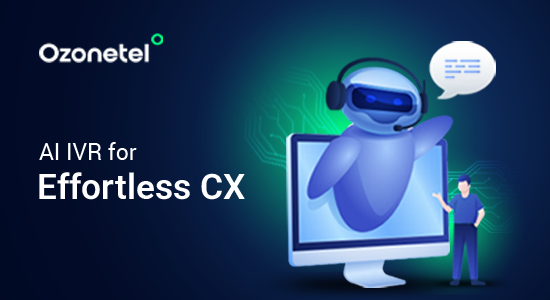- Resources
- Customer Interaction Management: A Comprehensive Guide
Customer Interaction Management: A Comprehensive Guide

Managing customer interactions across different channels can be overwhelming, but it’s essential for meeting growing expectations. Research shows that 43% of customers are willing to pay more for a better experience, which makes clear communication more important than ever.
Customer Interaction Management (CIM) software simplifies these processes, helping businesses respond faster and engage more personally with customers. In this guide, we’ll look into how CIM helps businesses connect with customers more effectively and improve overall satisfaction. Read along!
In this article, we will explore:
- 1.What is Customer Interaction Management?
- 2. Key Components of Customer Interaction Management
- 3.Importance of Customer Interaction Management for Businesses
- 4.Challenges in Effective Customer Interaction Management
- 5.How to Improve Customer Interaction Management
- 6. Benefits of Customer Interaction Management
- 7. How to Choose a Customer Interaction Management Software
- 8.How Customer Interaction Management Software Improves CX
- 9.What is the Role of AI in CIM
What is Employee Experience?
Employee Experience (EX) is the overall perception employees have of their journey within an organization. It encompasses every interaction and touchpoint, from recruitment and onboarding to daily responsibilities, support systems, and eventual offboarding.
What is Customer Interaction Management?
Customer Interaction Management (CIM) is the organized process of handling all interactions between your business and customers across various communication channels. It manages conversations through phone calls, emails, live chat, social media, and in-person engagements, ensuring a consistent and seamless customer experience.
Key Components of Customer Interaction Management
A robust CIM system helps businesses engage effectively across multiple channels, collect valuable feedback, and leverage actionable insights from customer data. Let’s dive into the three main components of an effective CIM system:
1. Multichannel Interaction Management
Managing customer interactions across various channels—such as phone, email, social media, and live chat—can be complex. A strong CIM system consolidates all these channels into one platform, making responding to customers consistently and promptly easier.
For example, if a customer starts an inquiry on social media and later calls your support team, your system should provide all the interaction history. This approach reduces delays and creates a seamless experience across all touchpoints.
2. Feedback Management
Collecting feedback after customer interactions is essential for measuring satisfaction and identifying areas for improvement. A good CIM system simplifies the process of gathering and analyzing feedback through automated surveys sent via email, text messages, or website pop-ups.
For instance, you can automatically trigger a customer satisfaction survey (CSAT) after a service call or an online purchase. These insights show how customers feel and highlight gaps in your service that need attention.
3. Data Management and Analytics
Every customer interaction generates data, which holds valuable insights about behavior, preferences, and performance metrics. A CIM system organizes this data into meaningful reports, helping you identify trends and problem areas.
For example, analytics can reveal response times, call abandonment rates, or how often customer issues get resolved in the first interaction (known as first-call resolution). These insights help you refine your processes and improve overall efficiency.
Importance of Customer Interaction Management for Businesses
Customer interaction management involves managing every customer touchpoint effectively to build stronger relationships, reduce churn, and improve overall satisfaction. Let’s explore why CIM is so important:
Strengthening Customer Relationships
CIM helps you build genuine connections with your customers by understanding their preferences, addressing their concerns, and providing tailored solutions. Positive interactions foster trust and loyalty, which leads to repeat business and long-term relationships.
For example, responding to customer inquiries quickly and resolving issues on the first attempt creates a sense of value and reliability, encouraging customers to stick with your brand.
Reducing Customer Churn
Losing customers due to poor interactions or unresolved issues directly impacts your revenue. CIM reduces churn by proactively resolving problems, offering timely support, and showing commitment to customer satisfaction.
Customers who feel heard and valued are less likely to switch to competitors. A CIM strategy focused on resolving pain points ensures higher retention rates.
Managing the Entire Customer Journey
CIM covers every customer journey stage, from initial awareness and purchase decisions to post-sale support. Managing these interactions consistently ensures customers receive the same level of service at every stage.
For instance, offering proactive support after purchase—like a follow-up email to check satisfaction—demonstrates that you care about their experience, boosting trust and loyalty.
Leveraging Customer Interaction Data
Every customer interaction generates valuable data. CIM systems allow you to collect and analyze this information to identify trends, improve processes, and address customer pain points.
For example, analyzing call data can reveal recurring issues or identify areas where support teams need training. This insight helps you refine your approach and create a better experience.
Delivering Seamless Multichannel Support
Modern customers interact through various phone, email, live chat, or social media channels. CIM systems integrate these interactions into a unified platform, allowing your team to provide consistent responses without customers repeating themselves.
This approach not only saves time but also improves customer satisfaction, as it demonstrates that your team understands their journey.
Scaling Support with Technology
CIM tools often include AI and automation, helping you scale customer interactions efficiently. For example:
- Chatbots: Handle common queries and provide instant responses.
- Automation: Route customers to the right team or agent based on their query type.
- AI Analytics: Predict customer satisfaction and highlight areas for improvement.
These technologies allow you to respond faster while maintaining a personal touch, even as your business grows.
Challenges in Effective Customer Interaction Management
Managing customer interactions effectively is important for businesses, but it comes with its own set of challenges. Some of these include:
Inconsistent Customer Data Management
Effective CIM relies on accurate and up-to-date customer data. However, businesses often face challenges with incomplete or outdated customer profiles, making it difficult to provide personalized experiences. For instance, incorrect data might lead to addressing customers with irrelevant offers, which can negatively impact satisfaction and trust.
Handling High Volumes of Interactions
As your customer base grows, so does the volume of interactions. Managing this surge without sacrificing response time or quality can strain your resources. Also, relying solely on manual processes can lead to delays, missed messages, or inconsistent service. Automation tools and chatbots can help but require careful implementation to maintain a human touch.
Lack of Integration Between Tools
Many businesses use multiple tools for handling customer interactions, feedback collection, and data analysis. However, if these tools don’t integrate seamlessly, it creates silos of information. For example, a CRM (Customer Relationship Management) system that doesn’t sync with your live chat software may prevent your team from accessing a complete customer history, resulting in inefficient service.
Managing Multichannel Interactions
Customers engage with businesses through various channels like email, social media, phone calls, live chat, and more. Keeping track of these interactions and ensuring consistent communication across all platforms is a major challenge.
For instance, a customer may start an inquiry via email and later follow up on social media. Without a unified system, it becomes difficult to maintain context and continuity, leading to frustration and a poor customer experience.
Collecting and Acting on Feedback
Gathering customer feedback is essential for improving interactions, but many businesses struggle to do so effectively. Additionally, acting on it quickly and meaningfully can be challenging, even when feedback is collected. For example, failing to resolve recurring complaints highlighted in customer feedback may give the impression that you’re not listening, leading to dissatisfaction.
How to Improve Customer Interaction Management
Customer interaction management is essential to maintaining strong, lasting client relationships But how can you enhance these interactions to ensure customer satisfaction and loyalty? Here are some ways to do this:
Leverage AI for Personalization
Use AI tools to analyze customer behavior, preferences, and past interactions to deliver targeted responses that feel individual and thoughtful. AI can suggest products, services, or content based on these insights, making customers feel valued and understood. This shift from generic responses to tailored engagement fosters deeper connections with your audience.
Adopt Omnichannel Support
Customers expect seamless experiences across various communication channels. Adopting an omnichannel approach means that your team can maintain a consistent, unified conversation no matter how a customer reaches out—whether through social media, email, or live chat.
With omnichannel support, interactions become more fluid and less fragmented, improving the overall customer experience. Integration of CRM tools ensures that customer data is accessible, empowering your team to resolve issues faster and more efficiently.
Empower Your Team with Real-Time Data
Empowering your customer service team with real-time data allows them to resolve issues swiftly. For instance, integrating tools that provide live updates on customer profiles, transaction history, and past interactions can help agents make informed decisions quickly. The key is not just having data but ensuring it’s actionable so your team can anticipate customer needs and provide proactive solutions.
Create Proactive Touchpoints
Rather than waiting for customers to initiate contact when there’s a problem, create proactive touchpoints throughout the customer journey. This could involve checking in with customers after a purchase, offering post-purchase support, or reminding them about relevant offers. Proactive engagement makes customers feel prioritized and helps resolve minor issues before they escalate.
Use Feedback Loops to Improve Interactions
After resolving an issue or completing an interaction, encourage customers to share their experiences. Use this feedback to refine your processes, address pain points, and identify areas for improvement. This commitment to continuous improvement enhances the quality of future interactions and builds customer trust.
Invest in Cross-Department Collaboration
Sales, marketing, product, and customer service teams should have access to the same customer data, enabling them to align their efforts and provide a cohesive experience. This collaborative approach can lead to more meaningful interactions that reflect a deep understanding of the customer’s needs.
Benefits of Customer Interaction Management
Implementing an effective customer interaction management strategy offers several advantages, ensuring your business meets customer expectations and builds lasting relationships. Some benefits include:
- Improved Customer Satisfaction: CIM helps you deliver consistent and personalized experiences, addressing customer needs promptly and effectively. Happy customers are likelier to remain loyal and recommend your business to others.
- Increased Customer Retention: Proactively managing interactions reduces churn by addressing customer concerns before they escalate. Regular and meaningful engagement builds trust, making customers less likely to switch to competitors.
- Streamlined Communication Across Channels: CIM ensures seamless communication across email, social media, chat, and phone, preventing gaps or repetitive queries. A unified system provides context to interactions, creating a cohesive experience.
- Actionable Insights from Customer Data: CIM tools collect and analyze customer interaction data, helping you understand pain points, preferences, and opportunities for improvement. These insights support decision-making and strategy development.
- Optimized Resource Management: With CIM software, you can allocate tasks efficiently, route queries to the right team, and automate repetitive tasks. This optimizes your resources and ensures faster response times without overburdening your team.
- Enhanced Employee Productivity: CIM systems equip your team with relevant customer information, such as past interactions and preferences. This reduces time spent searching for data and allows agents to focus on resolving issues quickly.
- Better Customer Loyalty and Advocacy: CIM fosters loyalty by consistently engaging with customers and addressing their needs. Satisfied customers are likelier to become brand advocates, promoting your business through word of mouth and online reviews.
These benefits highlight the importance of managing customer interactions efficiently. A robust CIM software is essential to provide consistent, high-quality experiences, reduce churn, and gain valuable insights to grow your business.
How to Choose a Customer Interaction Management Software
Choosing the right customer interaction management (CIM) software is essential for providing a seamless experience across multiple channels. The right tool helps you streamline workflows, personalize interactions, and improve customer satisfaction. Here’s how you can identify the best software for your needs:
Omnichannel Integration
Your CIM software should connect all your customers’ channels, such as phone calls, emails, social media, and live chat. This allows your team to manage all communications from one place, reducing the chances of missed messages or delays. Integration with popular platforms ensures you can offer consistent service across all touchpoints.
Customer Data Management
Look for software that consolidates customer data, including past interactions, purchase history, and support tickets, into one system. Centralizing this information lets your team provide personalized responses quickly and efficiently, making every interaction more meaningful.
Workflow Automation
Automation features help streamline repetitive tasks such as ticket routing, follow-up emails, or responding to frequently asked questions. With these routine tasks handled by the software, your team can focus on resolving more complex customer issues and delivering personalized support.
Real-Time Assistance and Transcriptions
Real-time assistance features, such as live guidance for agents, can improve how your team handles challenging situations. Transcription tools are especially useful for analyzing calls, training agents, and resolving disputes more efficiently.
Integration with CRM and Other Tools
Your CIM software should work seamlessly with customer relationship management (CRM) tools like Salesforce, HubSpot, or Zoho. This simplifies workflows by connecting customer interaction data with marketing, sales, and support activities. Additional email marketing or payment processing integrations can also boost your team’s productivity.
Customer Feedback Collection
Collecting customer feedback through surveys, such as Customer Satisfaction (CSAT) forms, is crucial for understanding the quality of your service. Reviewing this feedback helps you identify strengths and address weak areas in your customer interaction processes.
Customer Segmentation
Opt for software that supports customer segmentation based on criteria like demographics, location, or purchase behavior. This allows you to target specific groups with relevant communication, improving the impact of your outreach efforts.
User-Friendly Interface and Scalability
Choose software that is easy to use and adaptable to your business growth. A user-friendly interface reduces the learning curve for your team, while scalability ensures the software meets your needs as your customer base expands
How Customer Interaction Management Software Improves CX
Customer Interaction Management (CIM) software streamlines communication across multiple channels, ensuring a seamless and consistent customer experience. Integrating data from various touchpoints—such as email, live chat, social media, and phone calls—allows businesses to respond more efficiently and with greater personalization.
This unified approach helps agents access real-time information about customer preferences, history, and issues, enabling them to provide faster, more relevant solutions, ultimately improving overall customer satisfaction.
In addition, CIM software enhances the customer experience by empowering businesses to be proactive. By automating routine tasks, tracking customer sentiment, and triggering follow-up actions, businesses can anticipate customer needs before they arise. This leads to faster issue resolution, fewer frustrations, and stronger customer loyalty.
What is the Role of AI in CIM
Artificial Intelligence boosts customer interaction management by automating processes and improving customer service efficiency. AI can analyze vast amounts of data from customer interactions across various channels, enabling businesses to gain insights into customer behavior, preferences, and pain points. This allows for more personalized communication and quicker responses.
AI-powered tools like chatbots and virtual assistants help respond immediately to customer inquiries, reducing wait times and improving satisfaction. Additionally, AI can prioritize and route customer queries to the right agents based on their expertise or workload, ensuring a seamless experience. By automating repetitive tasks, AI frees human agents to focus on complex issues, ultimately improving overall customer service quality.
Conclusion: How Ozonetel’s oneCXi Platform Helps
In conclusion, effective customer interaction management is crucial for delivering seamless experiences and staying ahead in today’s competitive environment. Ozonetel’s AI-engineered platform empowers businesses to orchestrate journeys across a multitude of touchpoints, power billions of personalized conversations, and gain a 360º view of customers across the lifecycle. 3,500+ global brands trust oneCXi platform to capture the pulse of customers, drive cohesive experiences, and increase lifetime value.
If you’re looking for a reliable and flexible platform to optimize your customer communication, Ozonetel is the perfect choice. Schedule a demo now!
Want to see what Ozonetel can do for your company? Sign up today for a free 7-day trial.
Prashanth Kancherla
Chief Operating Officer, Ozonetel Communications
Over the past decade, Prashanth has worked with 3000+ customer experience and contact center leaders...
Chief Operating Officer, Ozonetel Communications
Over the past decade, Prashanth has worked with 3000+ customer experience and contact center leaders to comprehensively understand the need for effective and efficient customer communications at every step of their journey with a brand. Deeply embedded in today’s CCaaS ecosystem, he has been instrumental in Ozonetel's growth and contributed in various roles including product management, sales, and solution architecture.
Frequently Asked Questions
Call center productivity refers to how efficiently your agents handle customer inquiries, resolve issues, and manage interactions while balancing operational costs and maintaining high customer satisfaction. High productivity means your team is achieving more with fewer resources without compromising quality.
You can measure call center productivity by tracking key metrics and analyzing them regularly. Some common KPIs include:
- Calls Handled Per Agent: The number of calls successfully managed by each agent.
- Abandonment Rate: The percentage of calls where customers hang up before reaching an agent.
- CSAT Scores: Customer satisfaction ratings collected through post-call surveys.
- Net Promoter Score (NPS): Measures the likelihood of customers recommending your services.
- Call Quality: Evaluates how well agents communicate, resolve issues, and follow protocols.







